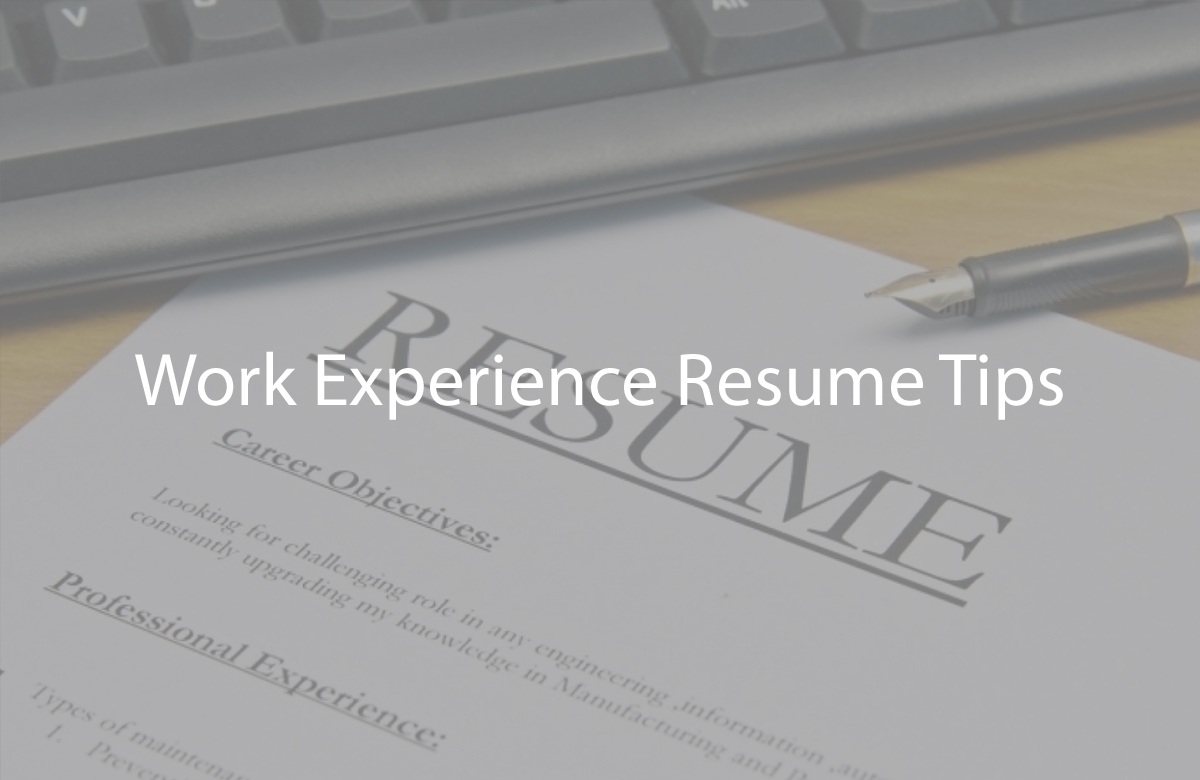
Work Experience Resume Tips
Work Experience Resume Tips : Highlighting your work experience effectively on your resume is essential to impress potential employers. Here are some specific tips to make your work experience section stand out:
- Start with a Strong Summary:
- Begin your work experience section with a brief summary or job title that encapsulates your professional background and expertise.
- List Your Experience in Reverse Chronological Order:
- Present your work experience in reverse chronological order, starting with your most recent job and working backward.
- Include Key Information for Each Position:
- For each position, provide the following information:
- Job title: Clearly state your job title.
- Company name: Mention the name of the company or organization where you worked.
- Location: Include the city and state (or country) of the company’s location.
- Employment dates: Specify the month and year you started and ended each position.
- For each position, provide the following information:
- Use Action Verbs:
- Begin each bullet point with a strong action verb to describe your responsibilities and achievements. This adds impact to your statements.
- Use verbs like “achieved,” “managed,” “implemented,” “led,” “developed,” and so on.
- Quantify Achievements:
- Whenever possible, quantify your achievements with specific numbers or statistics to demonstrate the impact of your work. For example, “increased sales by 25%,” or “managed a team of 10 employees.”
- Focus on Achievements, Not Just Responsibilities:
- Emphasize your accomplishments and the positive impact you had in each role, rather than merely listing your job responsibilities.
- Tailor Each Bullet Point:
- Customize your bullet points for each job, highlighting the most relevant skills and accomplishments that align with the job you’re applying for.
- Use the CAR or STAR Method:
- Consider using the CAR (Challenge, Action, Result) or STAR (Situation, Task, Action, Result) method to structure your bullet points. These methods help you provide context and showcase your problem-solving skills.
- Be Concise:
- Keep your bullet points concise and to the point. Use clear and straightforward language to communicate your achievements.
- Highlight Promotions and Advancements:
- If you received promotions or took on additional responsibilities within the same company, be sure to highlight these advancements.
- Include Relevant Volunteer or Internship Experience:
- If you lack extensive professional experience, you can include relevant volunteer work, internships, or freelance projects to demonstrate your skills and work ethic.
- Address Employment Gaps:
- If you have employment gaps, briefly explain them in your resume or cover letter. It’s better to address them proactively rather than leave them unexplained.
- Show Continuity and Consistency:
- Present a consistent picture of your career progression, avoiding abrupt jumps or frequent job changes without explanation.
- Highlight Transferable Skills:
- If changing careers, emphasize transferable skills and experiences that are relevant to the new role.
- Proofread Carefully:
- Ensure your work experience section is free of spelling, grammar, and typographical errors. Mistakes can detract from your professionalism.
- Use a Professional Tone:
- Maintain a professional tone and use language appropriate for your industry.
- Quantify Soft Skills:
- Consider quantifying soft skills where possible. For example, “effectively communicated with cross-functional teams to streamline processes.”
- Include any Awards or Recognition:
- If you received awards, honors, or recognition for your work, mention them in this section.
Remember that your work experience section is the heart of your resume, and it should demonstrate your qualifications and accomplishments effectively. Tailor your work experience to the specific job you’re applying for and make it a compelling narrative of your professional journey.
